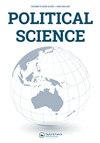澳大利亚和新西兰的太平洋政策:一致,不一致
IF 1.2
4区 社会学
Q3 POLITICAL SCIENCE
引用次数: 2
摘要
摘要面对中国在太平洋地区日益增长的参与,世界地区的两个传统地区大国澳大利亚和新西兰在2010年代末公布了重大政策举措。澳大利亚的“太平洋升级”和新西兰的“太平洋重置”都在发展合作、外交职位和高层交流方面大幅增加,从而可信地表明了这两个盟国希望继续成为太平洋岛国的首选伙伴。然而,结盟并不意味着澳大利亚和新西兰的太平洋政策相同。成对比较突出了在安全性和迁移方面的显著差异。我认为,澳大利亚太平洋政策对硬安全的强烈关注不仅反映了该国更突出的军事形象和与美国的联盟,也反映了该国有更大的脆弱感,这在一定程度上源于其与美拉尼西亚的地理和历史联系。这与新西兰对波利尼西亚的传统关注形成了鲜明对比。然后,我将这两个澳大拉西亚州截然不同的太平洋人口状况追溯到新西兰对该地区永久移民更加开放——这既反映了宪法义务,也反映了太平洋人民不同移民途径的发展。这些差异具有结构性,必然会影响澳大利亚和新西兰对太平洋的长期政策方针。本文章由计算机程序翻译,如有差异,请以英文原文为准。
Australia and New Zealand’s Pacific policy: aligned, not alike
ABSTRACT Faced with growing Chinese engagement in the Pacific, the two traditional regional powers in that world region, Australia and New Zealand (NZ), unveiled major policy initiatives in the late 2010s. Both Australia’s ‘Pacific Step-up’ and NZ’s ‘Pacific Reset’ featured substantial increases in terms of development cooperation, diplomatic posts, and high-level exchanges and thus credibly signalled the two allies’ desire to remain partners of first choice for Pacific Island Countries. Alignment does however not mean that Australia and NZ’s Pacific policies are alike. A paired comparison highlights significant differences with respect to security and migration. I argue that the strong focus in Australia’s Pacific policy on hard security reflects not only the country’s more pronounced military profile and its alliance with the United States but also the country’s greater sense of vulnerability which derives in part from its geographic and historical linkages with Melanesia. This contrasts with NZ’s more unburdened traditional focus on Polynesia. I then trace the very different Pacific population profiles of the two Australasian states back to NZ’s much greater openness to permanent migration from the region – reflecting both constitutional obligations and the development of distinct migration pathways for Pacific people. These differences are of a structural nature and are bound to shape Australia and NZ’s policy approaches to the Pacific in the longer term.
求助全文
通过发布文献求助,成功后即可免费获取论文全文。
去求助
来源期刊

Political Science
POLITICAL SCIENCE-
CiteScore
0.90
自引率
0.00%
发文量
13
期刊介绍:
Political Science publishes high quality original scholarly works in the broad field of political science. Submission of articles with a regional focus on New Zealand and the Asia-Pacific is particularly encouraged, but content is not limited to this focus. Contributions are invited from across the political science discipline, including from the fields of international relations, comparative politics, political theory and public administration. Proposals for collections of articles on a common theme or debate to be published as special issues are welcome, as well as individual submissions.
 求助内容:
求助内容: 应助结果提醒方式:
应助结果提醒方式:


